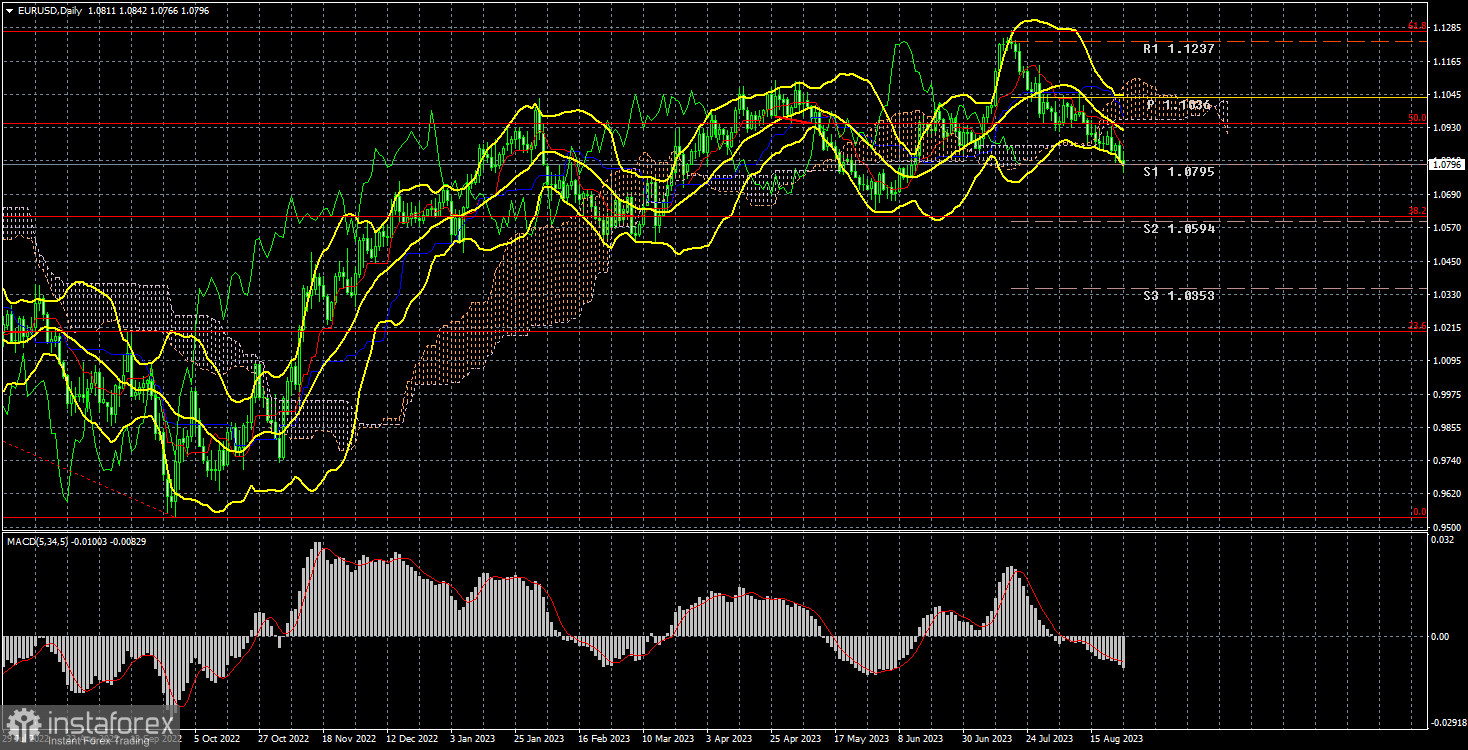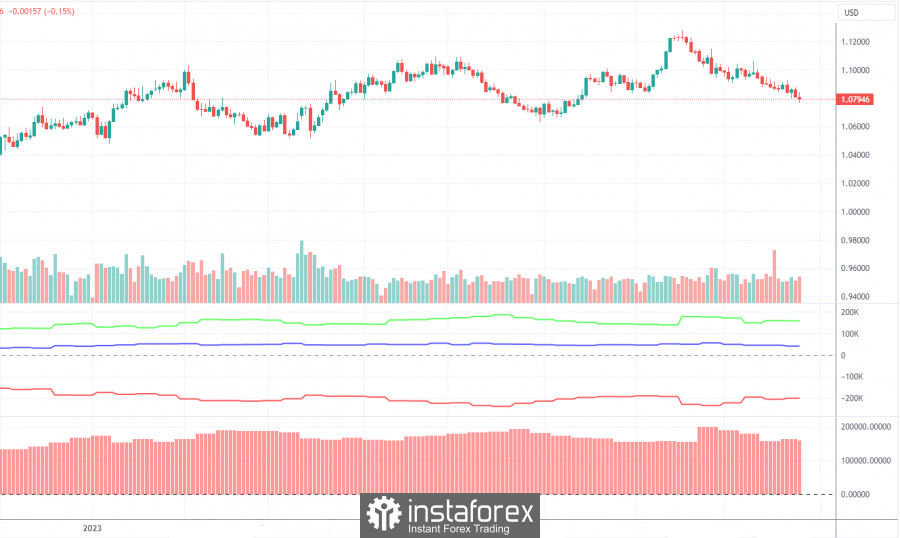Long-term Perspective.

The EUR/USD currency pair continued its sluggish decline this week and barely established itself below the Ichimoku cloud. This time, the establishment below the cloud can truly be considered as such, as the price dropped even below the previous value of the Senkou Span B line. Thus, the decline in quotes we have long awaited may continue with a target of the Fibonacci level of 38.2% (1.0609). We consider this level the minimum target for the correction, and the correction itself is significantly overdue. Several months ago, we mentioned that the euro was overbought and unjustifiably expensive. Moreover, there were no factors for it to be so high against the US dollar. Nevertheless, the pair slowly continued to rise, causing bewilderment each time. However, this time, the European currency might maintain a downward trend.
Last week had a few macroeconomic and fundamental events. We can only highlight the business activity indices in the European Union. They were significant this time, as the service sector indices dropped below the "waterline" of 50.0 for the first time in a long while. The EU countries' manufacturing sectors have been below this mark for a long time. As a result, the European economy is not only facing problems, but these problems are also intensifying. In the near future, we expect other economic indicators to decline, and the ECB is getting closer to pausing and ending its monetary tightening cycle. Naturally, this is bad news for the euro.
The speeches by Christine Lagarde and Jerome Powell on Friday did not provide the market with crucial information. This is evident from the overall volatility. Of course, there was an emotional surge, but Lagarde did not even state whether the ECB plans to raise rates in September or take a pause. After all, this is the question currently concerning traders the most. However, Lagarde spoke about high wage growth rates and prolonged rate maintenance at high levels but not about the September meeting.
COT Analysis.

On Friday, a new COT report for August 22 was released. Over the past 11 months, the COT report data corresponded to market dynamics. The illustration above clearly shows that the net position of large players (the second indicator) began to rise in September 2022. Around the same time, the European currency also began to rise. The net position has hardly increased over the last 6–7 months, yet the euro remains very high and doesn't decline. Currently, the net position of non-commercial traders is "bullish" and remains strong, and the European currency continues to appreciate against the dollar (in the long-term perspective).
We have already drawn traders' attention to the fact that a relatively high net position value suggests the end of an upward trend. This is indicated by the first indicator, where the red and green lines have significantly diverged from each other, which often precedes the end of a trend. During the last reporting week, the number of buy contracts for the "Non-commercial" group increased by 6.9 thousand, and the number of shorts increased by 8.0 thousand. Consequently, the net position decreased by 1.1 thousand contracts, which is insignificant. The number of buy contracts is higher than the number of sell contracts for non-commercial traders by 160 thousand, a very large gap, threefold in difference. In essence, even without COT reports, it's obvious that the European currency should decline, but the market still seems hesitant to sell.
Trading plan for the week of August 28 – September 1:
- In the 24-hour timeframe, the pair reached the Fibonacci level of 61.8% (1.1270) and began a downward correction. The price surpassed the critical line and the Ichimoku cloud, so without new buy signals, it is not recommended to open long positions. There was no rebound from the Fibonacci level of 50.0% or the Senkou Span B line. Thus, there's no reason to buy right now. There are also no fundamental reasons to expect the European currency to strengthen.
- As for selling the euro/dollar pair, it now seems more promising. The Ichimoku cloud has been breached, so the decline may continue with the targets we mentioned a few months ago – levels 5 and 6. The Fibonacci level of 38.2% also lies there and will act as a magnet for the price since it's important. The decline might be slow and weak; volatility remains relatively low on the smaller timeframes. Nevertheless, we advocate for a continued decline in the euro.
Notes on illustrations:
Price support and resistance levels, or Fibonacci levels, are targets when opening buys or sells. Take Profit levels can be placed near them.
Indicators: Ichimoku (standard settings), Bollinger Bands (standard settings), MACD (5, 34, 5).
Indicator 1 on COT charts – the size of the net position for each category of traders.
Indicator 2 on COT charts – the size of the net position for the "Non-commercial" group.
 English
English 
 Русский
Русский Bahasa Indonesia
Bahasa Indonesia Bahasa Malay
Bahasa Malay ไทย
ไทย Español
Español Deutsch
Deutsch Български
Български Français
Français Tiếng Việt
Tiếng Việt 中文
中文 বাংলা
বাংলা हिन्दी
हिन्दी Čeština
Čeština Українська
Українська Română
Română

